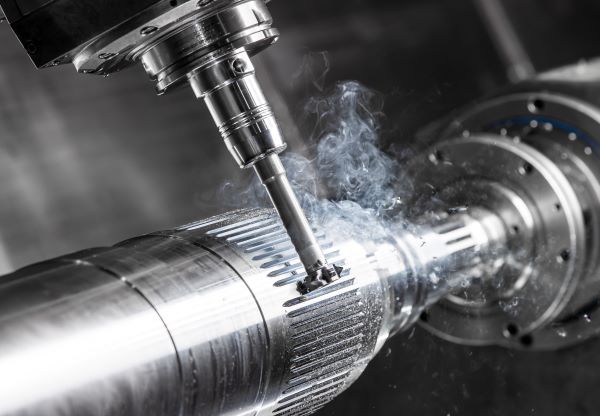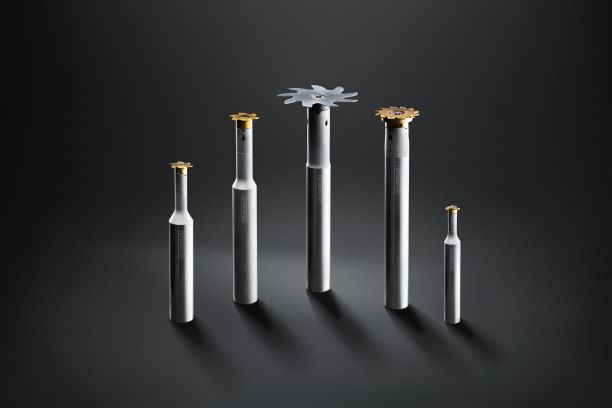Mastering processes: all-rounders for milling
Groove milling, parting off and gear cutting: these are just three processes that the Horn circular interpolation milling system accomplishes productively. As a true all-rounder, the extensive tool portfolio of this tool system tackles several other milling tasks as well. It can be used from an inside diameter of 8 mm for precise boring, for slot milling of narrow grooves from a width of 0.2 mm or for milling splines. The system has proven to be a problem solver in its numerous standard variants, as well as in special custom shapes for other milling processes.
The circular milling system from Horn offers the user a number of advantages: it is fast, reliable and achieves good surface finish. The tool, which is interpolated on a helical path, plunges into the material either at an angle or almost horizontally. This makes it possible, for example, to produce threads reproducibly to high quality. Compared to machining with indexable inserts for larger diameters or solid carbide cutters for smaller diameters, circular milling is generally more economical. Circular milling cutters have a wide range of applications. They machine steel, special steels, titanium, aluminium and special alloys. The precision tools are particularly suitable for groove milling, circular interpolation of holes, thread milling, T-slot milling, profile milling and gear cutting. However, they are also effective in special applications such as milling sealing grooves or machining connecting rods.
Milling of splines
The production of splines on a drive shaft had the potential for improvement. The shaft, which is 200 mm in diameter, almost 5,000 mm long and weighs around 600 kg, is used in the construction of large engines. The user previously had the teeth machined externally. Horn suggested that the spline teeth be machined using its 635 circular milling system in the same set-up as the turning operation. The special profile of the tool's six teeth matches the nominal profile of the tooth flanks on the workpiece. The overhang of the tool is long due to the cutting conditions but the vibration-damping solid carbide shank means there are no problems with tool vibration. All Horn tools for circular milling have an internal coolant supply. The precise interface between shank and insert allows micron-accuracy concentricity and run-out of the insert during changeover. Roughing and finishing are done with the same tool. In addition to the significantly faster production time and the elimination of subcontracting out production, the quality of the splines has also increased.

